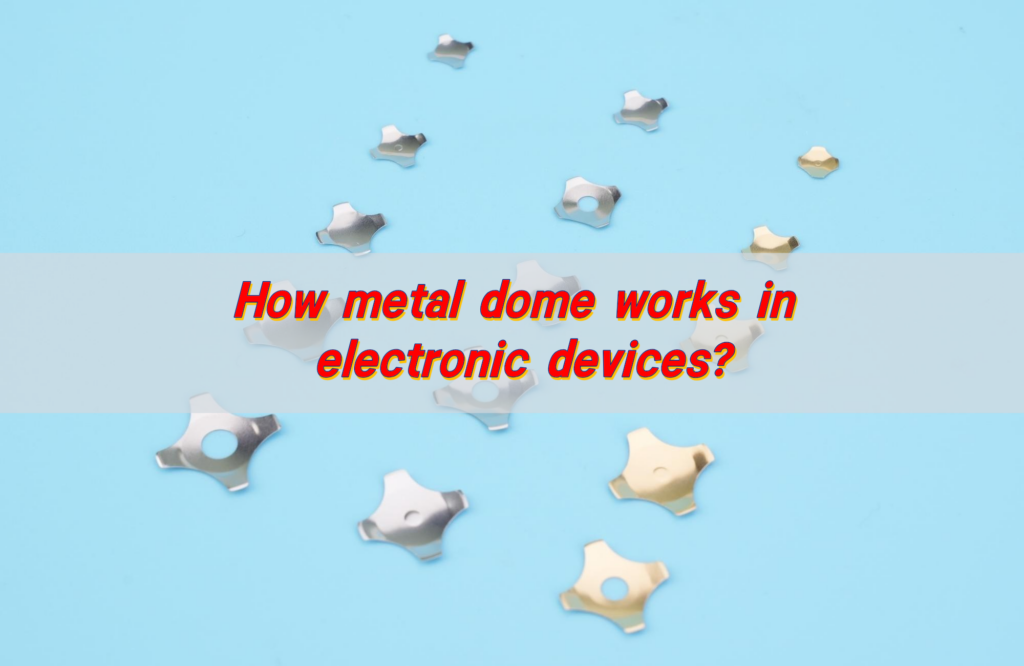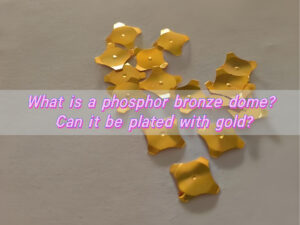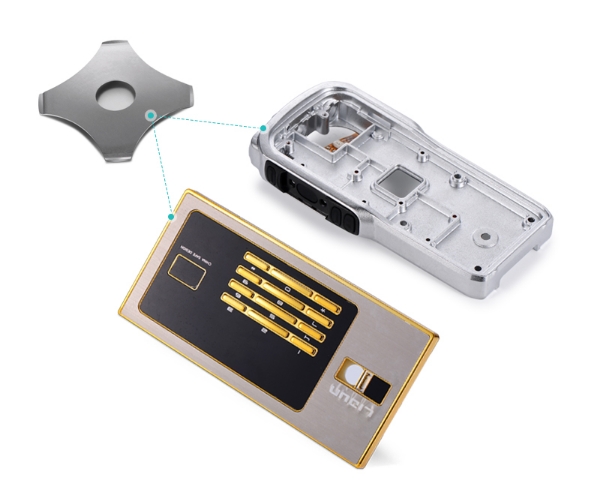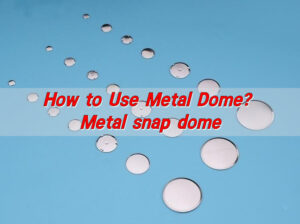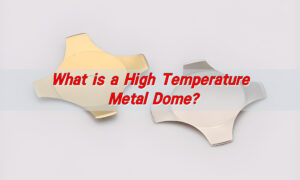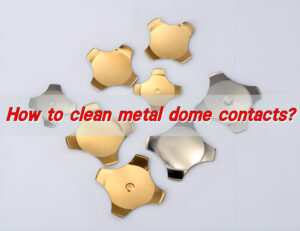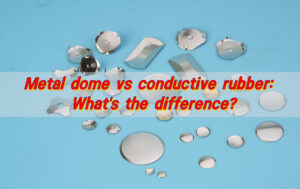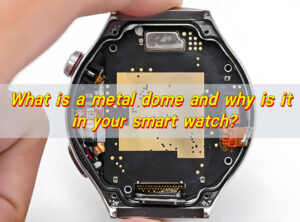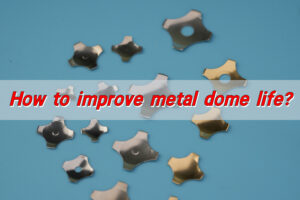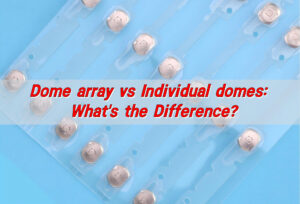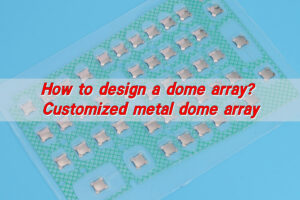Metal domes in electronic devices use their elastic deformation to switch the circuit on and off. When the user presses a button, the metal dome is pressed down and contacts the circuit board, forming a conduction; after releasing the button, the dome returns to its original shape and the circuit is disconnected. This characteristic makes metal domes widely used in membrane switches, PCB circuit boards, home appliances, automotive electronics and other fields.
How does a metal dome work?
At the heart of many electronic switches lies a metal dome. It’s a small, precisely engineered, snap-action disc. It’s usually made of stainless steel or other conductive materials. These domes sit between two layers — a top overlay and a circuit layer.
When you press the surface of the device, the metal dome collapses and makes contact with the circuit. This action completes the circuit and sends a signal. Once released, the dome returns to its original shape. Simple, fast, and effective.
The dome isn’t just there for structure — it serves both electrical and mechanical roles. The snap action gives you that satisfying “click.” More importantly, it tells your device to do something — like start a function or turn on a light.
How do domes create tactile feedback?
That crisp click when you press a button? That’s tactile feedback, and it’s what makes metal domes so special.
Without this feedback, pressing buttons would feel lifeless or uncertain. Metal domes are engineered to deliver consistent resistance and rebound. When you press down, the dome collapses, and when you let go, it snaps back.
This movement creates physical resistance your fingers can feel. That sensation is what we call tactile feedback. Metal domes are highly responsive. They react fast and reset instantly. This ensures repeated usage doesn’t wear them down. That’s why they are used in high-precision devices.
Why do electronic devices use metal domes?
Electronic devices demand precision, speed, and reliability. That’s where metal domes shine.
- They offer three vital benefits: durability, accuracy, and a premium user experience.
- Durability: Metal domes can handle millions of presses. Their strong structure means they won’t break or flatten easily.
- Accuracy: When the dome snaps, it ensures the signal is sent with perfect timing. There’s no delay, no false triggers.
- User Experience: That click feeling is addictive. It makes the device feel premium and responsive.
You’ll find metal domes in remote controls, POS systems, calculators, and even hospital equipment.
What’s the function of a dome in circuits?
In electronic circuits, the metal dome serves as a momentary switch. This means it allows current to flow only when pressed.
The dome sits above two pads on a printed circuit board (PCB). When you press the dome, it flattens and touches both pads. This connection lets the current pass through. That electrical signal then tells the device what action to perform.
Once pressure is released, the dome springs back. This breaks the connection, and the current stops. Instant on and off control, without bulky mechanisms. It makes metal domes perfect for compact electronics.
How does pressing a dome send a signal?
When your finger presses the button, it exerts force on the metal dome. As the force reaches a certain threshold, the dome flexes and snaps. That snap creates physical contact between the dome and the circuit.
The closed circuit allows electric current to pass. That current is recognized by the device as a command. It might trigger a screen tap, send data, or light up an indicator.
Releasing the pressure causes the dome to return to its original shape. The contact is broken, and the circuit is once again open. This mechanism is simple yet incredibly fast. It works in milliseconds.
How do dome shapes affect performance?
There are common shapes: four-leg, triangle, round, and oblong. Each has its own characteristics.
Four-leg domes are known for stability and strong click feedback. They are widely used in mobile phones and consumer electronics.
Triangle domes need less force to press. They’re good for compact devices where space is tight.
Round domes offer smooth tactile response and are often found in remote controls.
Oblong domes are ideal when space is limited, but longer actuation is needed.
Choosing the right shape depends on what you want from the button. Even the dome height and material thickness can shift the feel. A thicker dome gives stronger resistance. A higher dome needs more pressure.
How does a metal dome improve switch feel?
Switch feel is everything in user interaction. Metal domes are crafted to enhance that feel. Their snap-action response makes presses predictable and enjoyable. The feedback is immediate. The return is fast. The resistance is just right.
Unlike soft rubber switches, which can feel spongy or sluggish, metal domes are crisp and accurate. They improve efficiency and reduce input errors.
What makes metal domes responsive?
Responsiveness is a mix of design, materials, and structure.
- Material: Most domes are made from stainless steel. It’s strong, conductive, and resistant to wear.
- Design: The dome shape is engineered to collapse and recover in milliseconds. That ensures fast actuation.
- Assembly: Domes are often paired with PET layers, adhesives, and spacers. These layers support the dome and help maintain its snap action.
Also, some domes include air channels underneath. These tiny paths let air move during compression. That improves rebound speed and keeps the feel consistent over time.
Conclusion:
Metal domes play a crucial role in making electronic devices responsive, reliable, and enjoyable to use. They provide tactile feedback and complete electrical circuits. Whether it’s the satisfying click on your remote or the life-saving responsiveness in a medical device, metal domes deliver.
Want to learn more about custom dome solutions or need help with your next project? Contact us at sales@metal-domes.com


